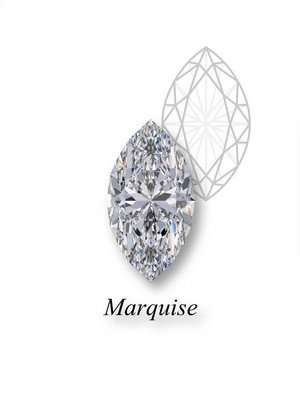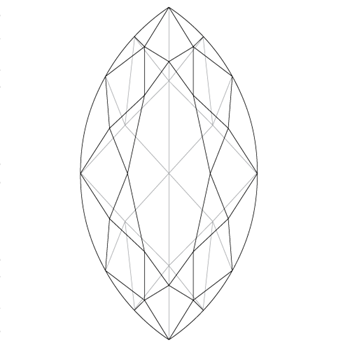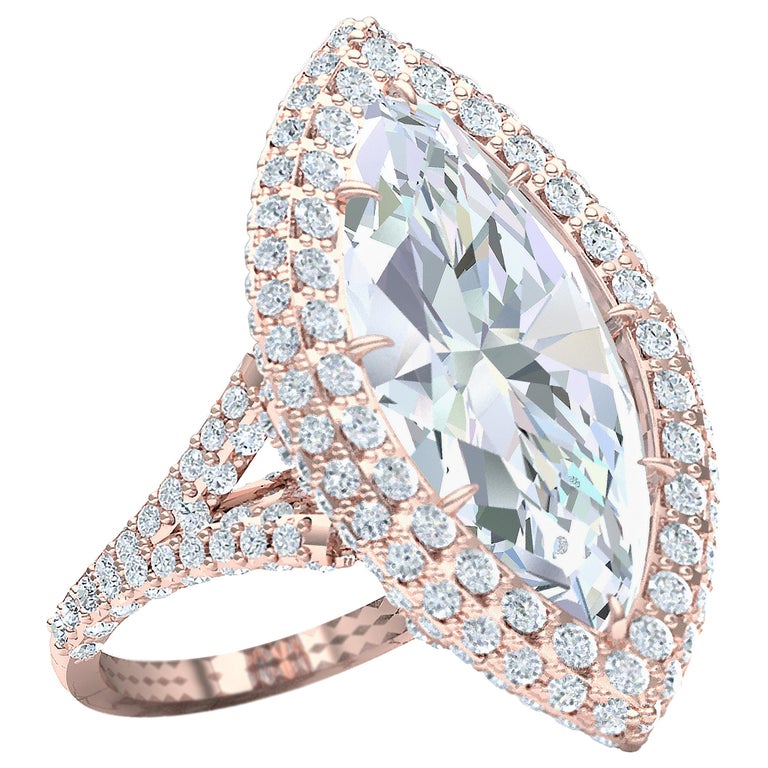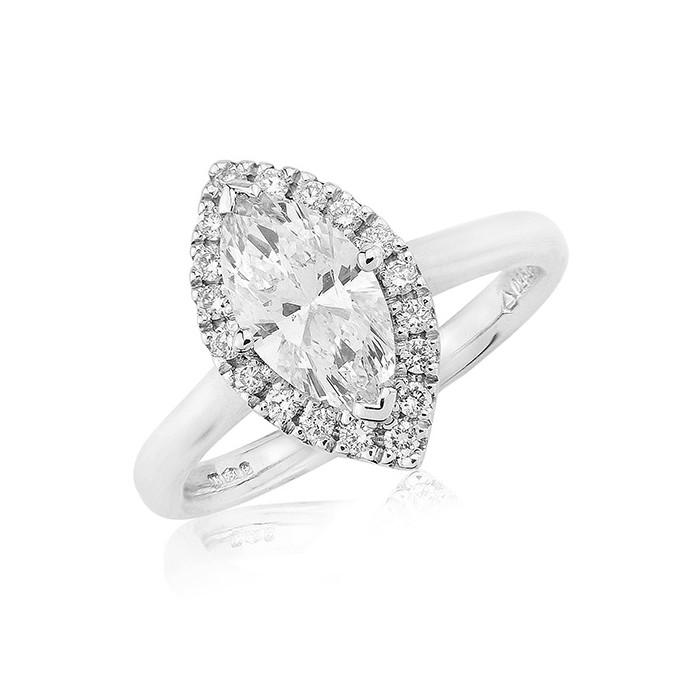Welcome back to the Diamonds Hatton Garden blog where we share the latest developments and insights from our Hatton Garden jewellers. In today’s blog we continue our on-going series examining diamond shapes with the historic Marquise cut. The Marquise diamond shape is one of the most classic and historic diamond shapes that dates back over three centuries. The charming shape recalls a vintage and timeless style that is known to elongate the finger and make it appear more slender. Sophisticated and elegant, Marquise shaped diamonds are most commonly set in diamond engagement rings however, they can also be used in diamond earrings, in particular, drop earrings.
What is a “Diamond Shape?
Diamond shape refers to the geometric appearance of a diamond. Diamond shapes are categorised into two groups: round diamonds and fancy shape diamonds. Round diamonds, also known as round brilliant cuts, are the most popular diamond shape. Fancy shape diamonds refer to any diamond that is not a round brilliant.
The History of the Marquise Cut
Like many other diamond shapes, the Marquise cut has its origins rooted both in history and in royalty. The timeless design, also referred to as ‘navette’ cut diamond, translates from French to ‘little ship’. Yet many believe the shape resembles a smile – perfect as a unique gift to celebrate love and commitment. Traditionally the Marquise Cut was designed for diamonds, however, it has since been used as an ideal cut for more contemporary gemstone designs. The origins of the shape date back to the 18th century when King Louis XV of France (1710-1774) commissioned a jeweler to design a cut shape that resembled the lips of his mistress, Jean Antoinette Poisson, the Marchioness Madame de Pompadour. With the passage of time the design evolved into the shape that we know today.

Where does the name Marquise come from?
Befitting of a gem for the lover of a King, the naming of tis precious shape is tied to royal courts. The name “marquise” refers to a hereditary rank above a count but below a duke and comes from the fact that courtiers wore marquise cut diamonds in order to show off their rank.
What are the proportions of a Marquise Cut Diamond?
The Marquise is a brilliant cut which, like the Round Brilliant, consisting of 57 triangular and kite-shaped facets (33 on the crown and 24 on the pavilion). This gives it an outstanding capacity for fire and brilliance – prized characteristics that make the diamond sparkle. However, unlike a Round Brilliant, the pavilion of a Marquise may have 4, 6, or 8 main facets. The traditional ideal length to width ratio for a Marquise Cut diamond is 2:1 – the stone being twice as long as it is wide. However, there are no strict rules or specifications and any ratio between 1.80 and 2.10 makes for a well-proportioned, attractive stone.

Why choose a Marquise Cut?
Marquise cut diamonds are more affordable than other cuts of diamonds, which makes them popular for those looking for exceptional quality and value when buying loose diamonds. A Marquise cut maximises the amount of carat weight in a diamond so it appears to be larger than other cuts of diamonds such as the round brilliant. Indeed, the unique shape is a popular cut for loose fancy coloured diamonds as the shape helps the brilliantly saturated colours to shine. Marquise cut diamond engagement rings are a popular choice regardless of the colour of diamond you choos.e

With over 50 years experience within jewellery, Diamonds Hatton Garden can help you find the marquise shape diamond engagement ring of your dreams. Book your personal appointment today via info@diamondshg.co.uk or on +44 7951 060238.

